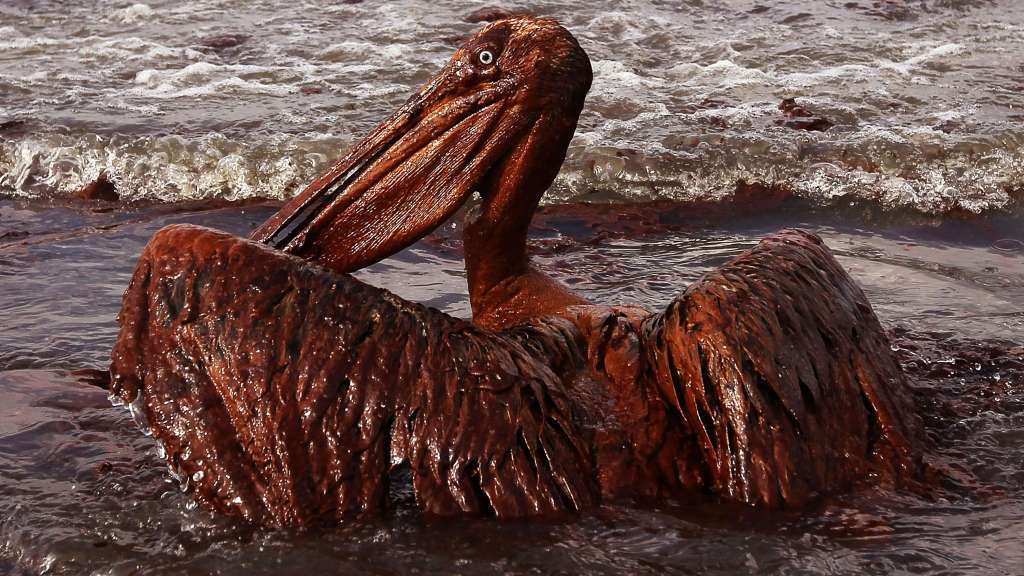(CNN) — Tar balls that may be linked to the oil spill off the coast of Orange County, California, are washing up on San Diego beaches, county officials said Thursday, highlighting concerns about the widening environmental impact days after tens of thousands of gallons of crude oil spilled into the ocean.
“While it is not impossible for this to occur naturally, the quantity is highly unlikely, highly unusual, and it is very likely that these tar balls are in fact the result of the oil spill,” San Diego County Board of Supervisors Chair Nathan Fletcher said in a news conference Thursday.
“We do not know that for certain yet,” he added. Officials have collected samples, which are being tested.
San Diego County will declare a state of emergency if the tar balls are tied to the Orange County oil spill, Fletcher said. Booms — floating barriers used to contain an oil spill — have been deployed out of an abundance of caution, he said.
The news comes days after the first reports of the spill off the coast of Southern California, which forced the closure of beaches and threatened coastal habitats after oil leaked into the ocean from a split, or partial tear, in a pipeline several miles offshore.
According to Fletcher, lifeguards from the cities of Carlsbad and Oceanside saw the tar balls on their beaches Wednesday night, and officials have also received reports of tar balls in Encinitas and Del Mar, some 70 miles south of the beaches initially impacted in Orange County.
There is no immediate threat to public health, Fletcher said, and the beaches will remain open until further notice. But officials have asked that people be on the lookout for the tar balls.
Meantime, officials continue their own cleanup efforts in Orange County, where nearly 1,500 people are expected to help out this weekend, Orange County Second District Supervisor Katrina Foley said on Twitter.
People should not approach any oiled animals, she added, but call the Oiled Wildlife Care Network (OWCN).
According to OWCN, as of Thursday evening, the number of wildlife recovered in the response totaled 35, including 10 birds that have been recovered dead.
The oil spill has been designated a “Major Marine Casualty,” the US Coast Guard announced Thursday, the highest level of severity. In this case, it’s been designated as such “due to the potential involvement of a vessel and the resulting damages estimated in excess of $500,000,” the Coast Guard said in a statement.
A class action lawsuit was filed against Amplify Energy and affiliated corporations Thursday on behalf of business owners impacted by the oil spill, claiming the companies failed to safely maintain the pipeline.
CNN has contacted Amplify Energy, which operated the pipeline believed to be the source of the spill, for comment on the lawsuit, and is awaiting its reply.
Investigation into cause continues
While the exact number is not known, officials said in a news conference Thursday they estimate at least 24,000 gallons and possibly as much as 131,000 gallons of crude oil were released into the Pacific Ocean. US Coast Guard Captain Rebecca Ore said the worst case scenario would put the figure at a maximum of 131,628 gallons, or 3,134 barrels.
A joint investigation between the US Coast Guard and other officials continues to move forward, Ore said.
Authorities said earlier this week that the source appeared to be a 13-inch split found in a 4,000-foot section of pipe owned by Amplify Energy. The pipe had been pulled about 105 feet to the side, authorities said.
A preliminary report indicated the partial tear could have been caused by a vessel’s anchor that hooked the pipeline, the US Department of Transportation’s Pipeline and Hazardous Materials Safety Administration said in a notice to Amplify Energy. The incident remains under investigation.
Earlier this week, the US Coast Guard boarded a German cargo ship that was anchored in waters off Southern California when the pipeline began spilling crude oil into the ocean.
On Friday, a spokesperson for the company that runs the ship said the ship was not under investigation, adding the Coast Guard had given the ship permission to leave port.
Nils Haupt, the spokesperson for the company, Hapag-Lloyd, previously confirmed to CNN in an email Thursday that the ship had been boarded the day prior by the US Coast Guard.
Coast Guard officials boarded the Rotterdam Express Wednesday in Northern California, according to Roberto Bernardo, a spokesperson for the Port of Oakland. The ship was in port for about a day to unload its cargo, which is typical, Bernardo said, and is now headed for the Port of Manzanillo in Mexico.
The ship had anchored in an area of the Pacific Ocean on September 21, as directed by San Pedro Marine Traffic, Haupt said in Thursday’s email to CNN. The ship remained in the same position for 12 days before heading for Oakland.
“During the period in question the vessel has not moved from anchorage and has not passed over the pipeline,” Haupt said. “During anchorage no oil in the water has been spotted. Hapag-Lloyd is fully cooperating with all authorities involved.”
The Unified Command responding to the oil spill declined to comment on the Rotterdam Express Thursday, saying in a statement, “We do not discuss ongoing investigations, but we are analyzing electric charting systems from our vessel traffic service to see what ships were anchored or moving over the spill area.”
The-CNN-Wire
™ & © 2021 Cable News Network, Inc., a WarnerMedia Company. All rights reserved.

